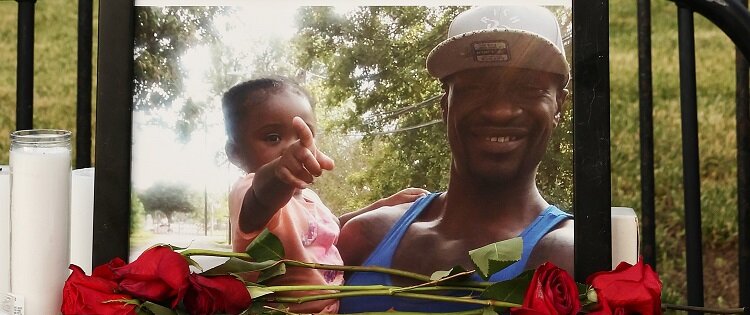
We’ve all seen the video: Police officer Derek Chauvin kneels on George Floyd’s neck for nine minutes and 29 seconds, as he lies handcuffed, face-down on the street, gasping for breath, calling for help, until Floyd goes unconscious.
But reading the Minneapolis Police Department’s initial report of the incident, you’d never know that this is what happened. Dated May 26, the day after Floyd’s murder, the report is titled, “Man dies after medical incident during police interaction.”
After Floyd got out of his car, the report says, “he physically resisted officers. Officers were able to get the suspect into handcuffs and noted he appeared to be suffering medical distress. Officers called for an ambulance. He was transported to Hennepin County Medical Center by ambulance where he died a short time later. At no time were weapons of any type used by anyone involved in this incident.”
Whether intentional or not, the gap between reality and what ends up in a police account clearly matters.
Of course this isn’t the first time a police report obscured the truth to protect law enforcement. In Detroit in 1982, a white, laid-off auto worker and his stepfather beat a Chinese American man named Vincent Chin to death, blaming him for Japan’s domination of the U.S. auto market. Like the aftermath of Floyd’s murder, Chin’s case galvanized Asian Americans and became a turning point in the community’s history.
But the police report got it wrong then too, by labeling Chin “white,” thus covering up the racial motive of the crime. This miscategorization wasn’t a mistake, per se — at the time, Detroit police reports only had options for black or white — but it wasn’t accurate either.
Whether intentional or not, the gap between reality and what ends up in a police account clearly matters. Reporters have traditionally seen government sources, including police reports and law enforcement public information officers (PIOs), as reliable and requiring fewer verifications. To an extent this makes sense, since they usually detail the who, what, when, where, why and how.
But recently journalists have grown more critical of information obtained from police and attentive to how they present that information to their audiences.
Public information officers, like any other spokespeople, must present a positive image of their departments, so downplaying information damaging to the department is part of the job.
Now, reporters often clarify that information is “according to the public information officer,” and make clear in breaking news reporting the need for further independent verification. In some cases, reporters even start with the assumption that government reports are incorrect — since this has too often proven to be the case.
To approach police reports with skepticism, reporters must understand how to read them.
First is to remember the role of police reports and PIOs. PIOs are not eyewitnesses; their accounts come after piecing together oftentimes messy contexts from dispatchers, officers onsite and other eyewitnesses. PIOs, like any other spokespeople, must present a positive image of their departments, so downplaying information damaging to the department is part of the job. Police departments typically put out two to five reports per day, meaning there’s a limit to how much detail or depth any single one will have.
Given the systemic barriers to truth in police reports, journalists need to go back to on-the-ground reporting. Remember the approach of verifying all sources, whether law enforcement or otherwise. It means putting in the work.
This even applies to police body, vehicle and surveillance video. Reporters can’t rely too heavily on it either, because as criminal justice professor Noel Otu of the University of Texas Rio Grande Valley has written, this footage often ignores nuances and context, since it doesn’t capture what’s off camera. Legal scholar Richard Lin also points out that body cameras can pose privacy concerns for those captured on film, since the footage could fall under open record statutes. In reporting any story, journalists must also determine what wasn’t on camera and verify what is exactly seen.
The public can help journalists fill in the missing spaces by providing interviews, taking photos and videos. As journalists scrutinize these accounts, metadata like time, location, and camera stamps on a video can add nuance to the newsgathering picture. Along the way, we must ensure all such evidence was properly obtained by both law enforcement and journalists.
Police body, vehicle and surveillance video… often ignores nuances and context, since it doesn’t capture what’s off camera.
It is true, recent discrepancies in police reports have challenged journalists to reconsider established protocols in some cases. Yes, that means more work. Yes, that means things aren’t the way they used to be. But the silver lining is that this sort of jolt can reinvigorate an industry and its raison d’être. Back to basics can be clarifying.
Earlier this month I was out in the field for the first time in a year, speaking with primary sources, to cover the aftermath of the Atlanta spa shootings. There is no replacement for talking with an eyewitness. Though it meant three grueling 18-hour days of interviews across Fulton County, I needed to do it to understand what had happened. My team and I needed to meet with law enforcement, but we also needed to be face-to-face with family members of the deceased, with community leaders — and with the truth. After verification.
Researcher Catherine Devlin contributed to this piece, along with Roland Hwang, lecturer at the University of Michigan.



